The St. Paul District constructed and placed approximately 15 dams into operation starting with Lake Winnie, Leech Lake and Pokegama Lake dams on the Headwaters of the Mississippi River in 1884 and concluded with the Highway 75/Bigstone Dam in 1972. Except for the Headwaters dams that were constructed at the outlets of large natural lakes, the remaining dams created new reservoirs. These lakes, reservoirs and tail water areas created prime locations for outdoor recreation and visitors slowly starting utilizing the areas as railroads, road systems, vehicles and accessibility became more modern.
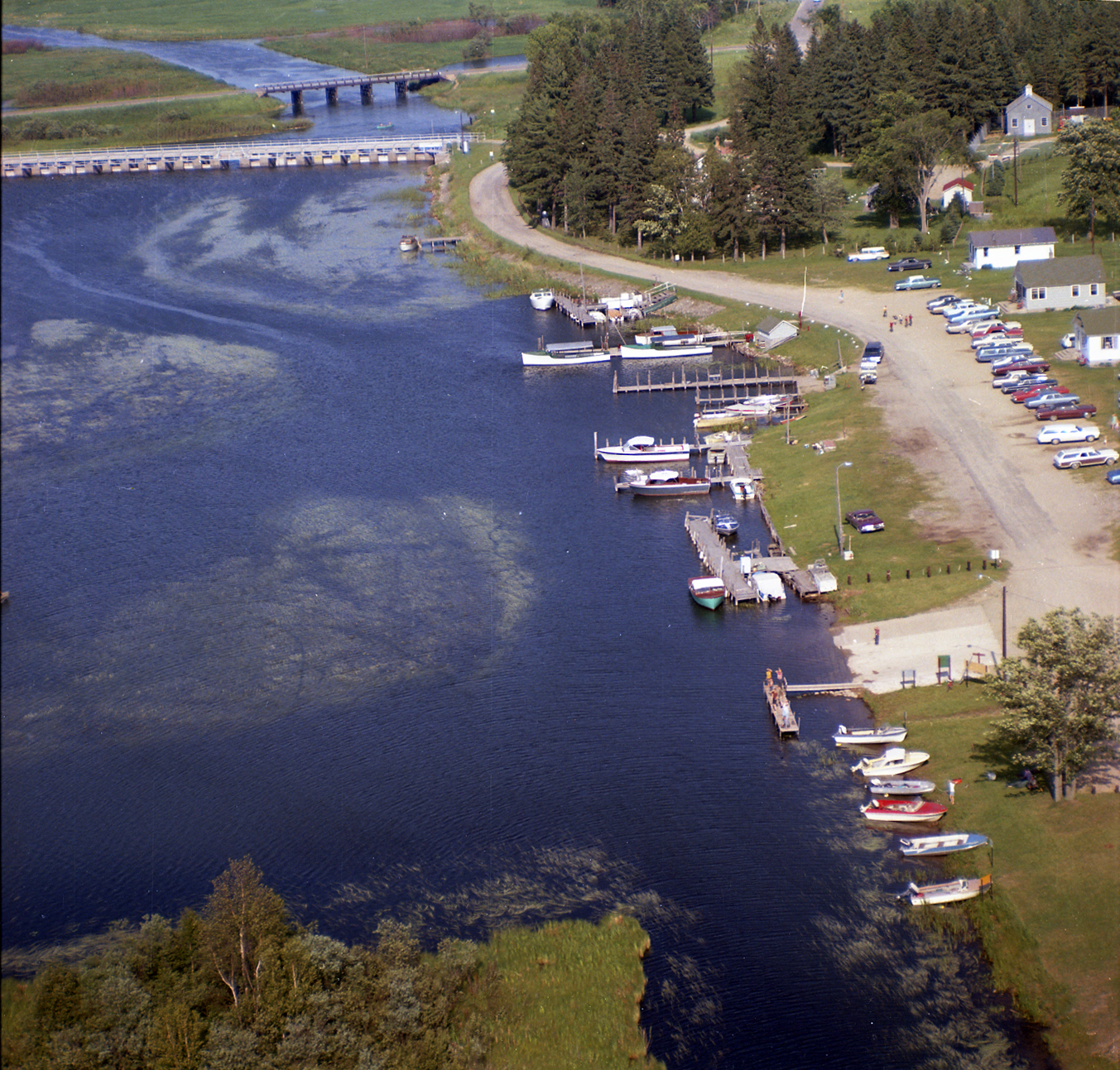 The St. Paul District started providing basic recreation facilities at Leech Lake as early as 1909. Most of the dam sites accommodated tent campers on an informal basis until the completion of master plans for recreational site development were completed between 1964 and 1977. By the 1930s, Leech Lake had several boat liveries and launch services providing fishing opportunities to the visiting public. The five launch services in business in the late 1970s have been reduced to one by 2005 as private boats and equipment replaced the need for launches and guides for hire. The Corps of Engineers, however, did very little to provide formal public recreational facilities before the 1970s even as visitation continued to increase dramatically.
The St. Paul District started providing basic recreation facilities at Leech Lake as early as 1909. Most of the dam sites accommodated tent campers on an informal basis until the completion of master plans for recreational site development were completed between 1964 and 1977. By the 1930s, Leech Lake had several boat liveries and launch services providing fishing opportunities to the visiting public. The five launch services in business in the late 1970s have been reduced to one by 2005 as private boats and equipment replaced the need for launches and guides for hire. The Corps of Engineers, however, did very little to provide formal public recreational facilities before the 1970s even as visitation continued to increase dramatically.
Section 4 of the Flood Control Act of 1944 authorized the Corps to construct, maintain and operate park and recreational facilities in reservoir areas. The act also authorized the issuance of leases to other governmental agencies to provide the same type of services. These reservoir areas were to be open to the public generally without charge for boating, swimming, fishing, camping and other recreational activities.
West Ashtabula Crossing Recreation Area near Valley City, North Dakota, on Lake Ashtabula was constructed by the local county parks department in the 1950s and Blackhawk Park near Desoto, Wisconsin, was constructed by Vernon County in 1960 on land leased from the Corps of Engineers. These became the first multipurpose recreation areas in the district. The counties operated the recreation areas until the leases were cancelled in 1980. The Corps has operated and maintained the West Ashtabula Crossing and Blackhawk recreation areas since 1980.The Land and Water Conservation Fund Act of 1965 authorized the collection of special recreation use fees for camping and other purposes. The act prohibited entrance fees to waterways and lakes or charges for drinking water, wayside exhibits, roads, overlook sites, visitor centers, scenic drives, primitive boat ramps, toilet facilities, picnic tables or primitive camping areas.
 The act also established the requirement to provide at least one free primitive campground at any lake or reservoir operated by the Corps of Engineers and initiated the Golden Age Passport Program that provided a lifetime 50 percent discount for the handicapped and individuals 62 years of age or older who were legal citizens of the United States of America. The discount included all friends and family members camping in the same private recreational unit. The Golden Age Passport Program was discontinued in December of 2004 and replaced with the federal multi-agency America the Beautiful Program, which provided the same discounts but with a charge of $10 per card. The Corps still honors the discount for any visitor that still possesses a Golden Age or Golden Access Passport card. There is no longer a requirement to provide a free primitive campground at St. Paul District lakes and reservoirs.
The act also established the requirement to provide at least one free primitive campground at any lake or reservoir operated by the Corps of Engineers and initiated the Golden Age Passport Program that provided a lifetime 50 percent discount for the handicapped and individuals 62 years of age or older who were legal citizens of the United States of America. The discount included all friends and family members camping in the same private recreational unit. The Golden Age Passport Program was discontinued in December of 2004 and replaced with the federal multi-agency America the Beautiful Program, which provided the same discounts but with a charge of $10 per card. The Corps still honors the discount for any visitor that still possesses a Golden Age or Golden Access Passport card. There is no longer a requirement to provide a free primitive campground at St. Paul District lakes and reservoirs.
After a re-organization in the St. Paul District, effective Jan. 1, 1961, the Structures Branch was re-designated the Project Operations Branch, the Reservoir Management Section was re-designated the Conservation Section and the Administration Branch was re-designated the Office Operations Branch. Another re-organization in December of 1964 established the Construction-Operations Division, which included a Project Operations Branch, the Reservoir Operation Section and the Recreation Section. In March of 1973, the two sections were combined into the Recreation Resource Management Section still under the Project Operations Branch. In the 1980s, the section name was changed to the Natural Resources Management Section.
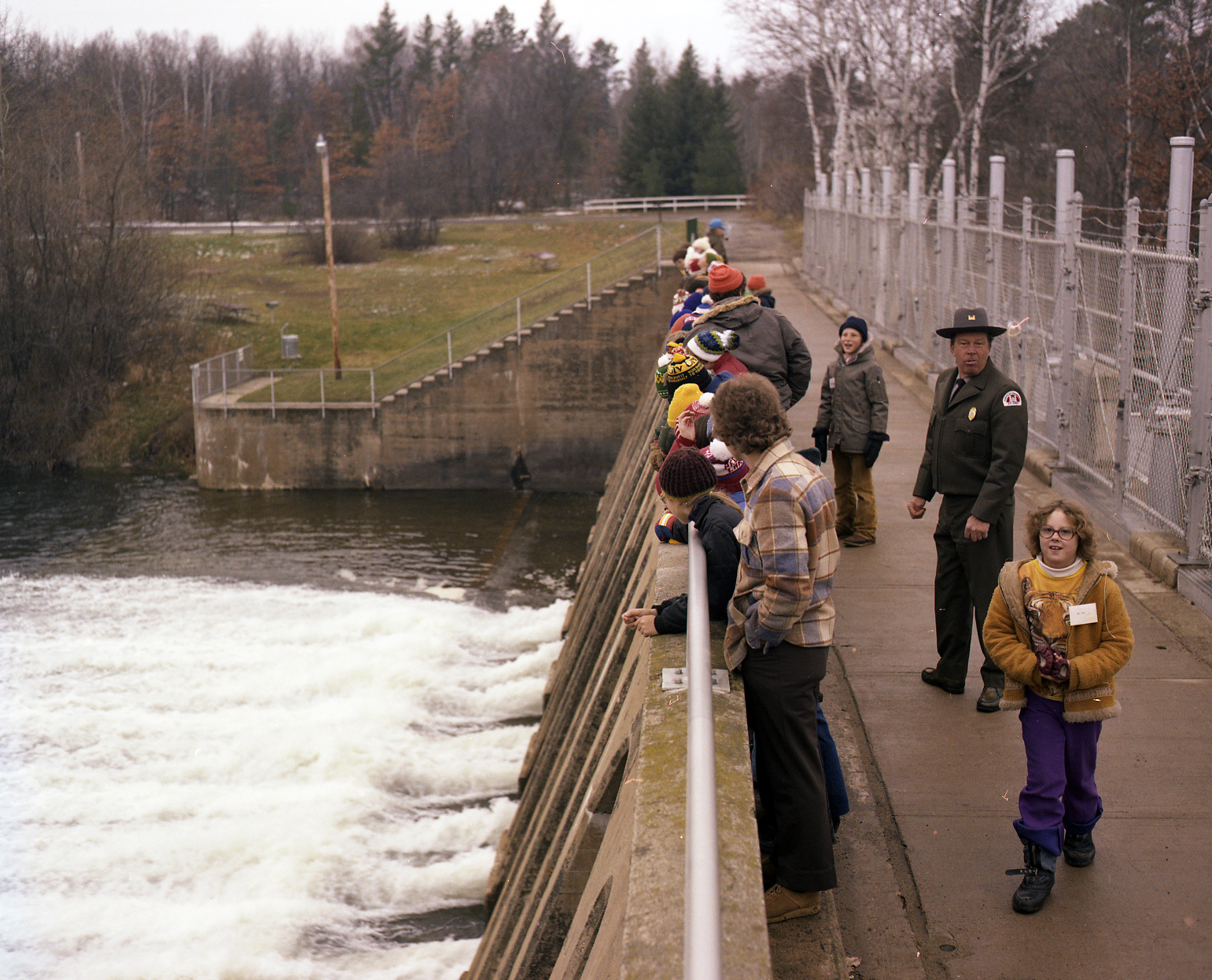 The individuals that operated the dam sites were originally called flood control operators or dam tenders. In the late 1970s, the job title was changed to park manager due to the more diversified job duties created with the onset of formal recreation and natural resource management programs. At about this time, three area manager positions were established under the Recreation Resource Management Section at the Mississippi Headwaters Office in Remer, Minnesota; the Natural Resources Office in La Crescent, Wisconsin, which included the Mississippi River and Eau Galle site; and the Western Flood Control Office in Fargo, North Dakota, which included the flood control sites in western Minnesota, South Dakota and North Dakota.
The individuals that operated the dam sites were originally called flood control operators or dam tenders. In the late 1970s, the job title was changed to park manager due to the more diversified job duties created with the onset of formal recreation and natural resource management programs. At about this time, three area manager positions were established under the Recreation Resource Management Section at the Mississippi Headwaters Office in Remer, Minnesota; the Natural Resources Office in La Crescent, Wisconsin, which included the Mississippi River and Eau Galle site; and the Western Flood Control Office in Fargo, North Dakota, which included the flood control sites in western Minnesota, South Dakota and North Dakota.
In the spring of 1995, the Natural Resource Management Section was disbanded and the duties were empowered to the field sites at the area manager level, which were re-designated as section offices. The Recreation and Natural Resources Branch was established in 2005 and operated for three years under the three area manger system. Another reorganization effective Aug. 3, 2008, re- established the Recreation and Natural Resources Branch in Fargo and dismantled the Mississippi Headwaters Section, the Natural Resources Section and the Western Flood Control Section.
Six new section offices were established under the Recreation and Natural Resources Branch, mainly due to the more stringent supervisory requirements of the 2006 pay for performance National Security Personnel System established by Congress between 2004 and 2005. The NSPS replaced the Total Army Performance Evaluation System, and the new Recreation and Natural Resources Branch sections include: the Environmental Section (Mississippi River), the Eau Galle & Mississippi River Section, the Northern Headwaters Section, the Southern Headwaters Section, the Minnesota Flood Control Section and the North Dakota Flood Control Section. Congress repealed NSPS in October of 2009, and the district reverted back to the TAPES. Even with less stringent supervisory requirements under TAPES, all six section offices remain viable to this day.
The St. Paul District experienced a devastating loss in October 1974, when Ron Cloutier (33), chief of the Recreation Resource Management Section, and Terry Johnson (25), civil engineer in support of the Project Operations Branch, were tragically killed in a helicopter crash just south of the Moorhead, Minnesota, city limits at approximately 1 p.m. while inspecting local flood control and channel projects. Witnesses confirmed the helicopter that was leased to the Corps of Engineers from Ranger Aviation of Jordan, Minnesota, crashed when the pilot started making a turn and the rear rotor fell off the aircraft. The Cross and Gull Lake Recreation Areas were renamed the Ronald Louis Cloutier Recreation Area and the Terry R. Johnson Recreation Area, respectively, in memory of the fallen district employees. The dedication ceremonies took place in August of 1975.
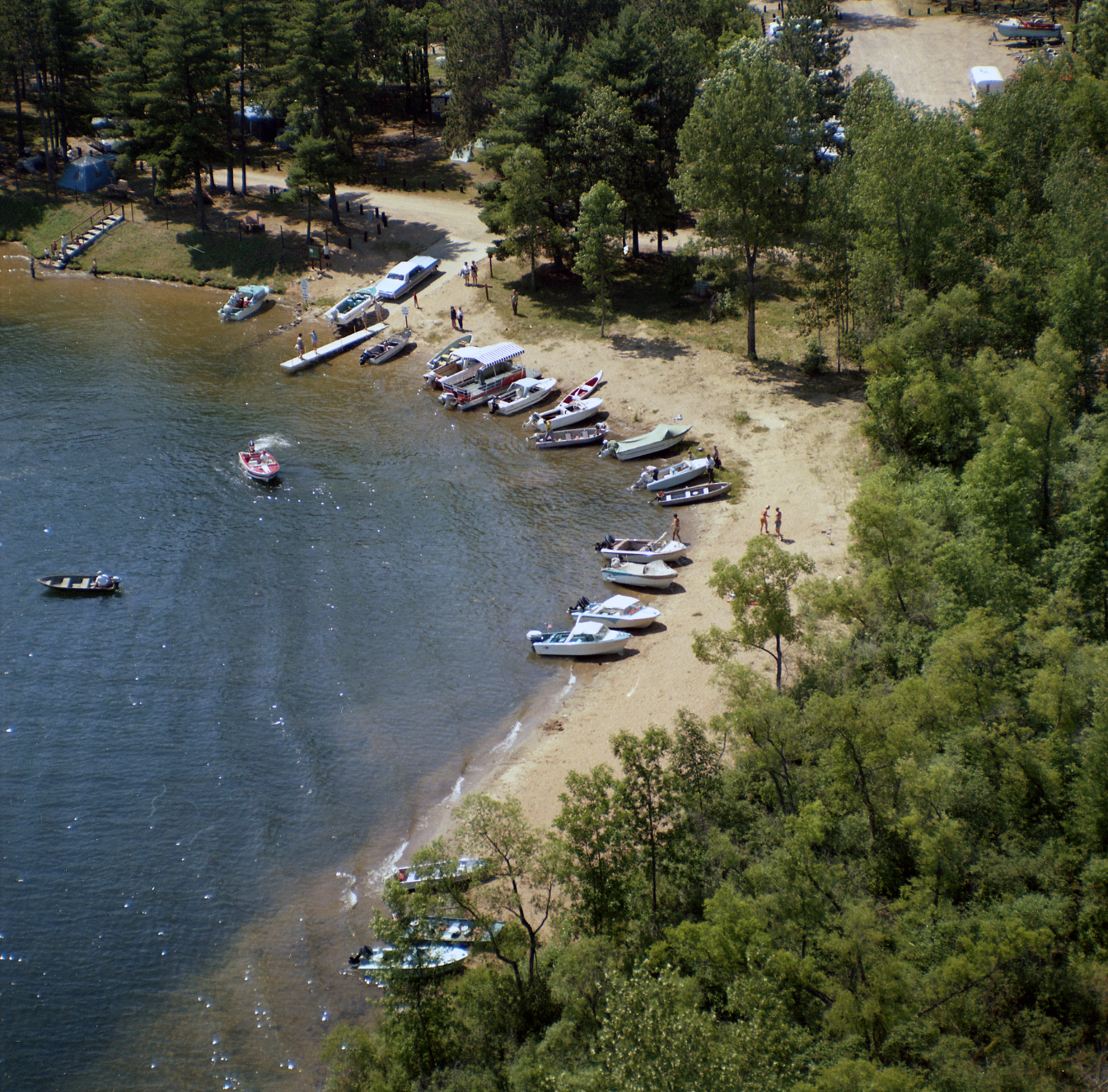 The St. Paul District provided very limited formal recreational facilities up through the 1960s, except for the areas leased to the counties. In the late 1960s, dam tender Ed Fitzpatrick started establishing some day use areas at the Cross Lake site by placing picnic tables and garbage receptacles in areas that were cleared and brushed by volunteer labor with the approval of the Project Operations Branch.
The St. Paul District provided very limited formal recreational facilities up through the 1960s, except for the areas leased to the counties. In the late 1960s, dam tender Ed Fitzpatrick started establishing some day use areas at the Cross Lake site by placing picnic tables and garbage receptacles in areas that were cleared and brushed by volunteer labor with the approval of the Project Operations Branch.
Formal recreation facilities were constructed and placed in operation throughout the 1970s and into the 1980s in accordance with approved master plans. Facilities provided included roads, parking lots, campgrounds, security lights, electric hook-ups, garbage receptacles, fish cleaning facilities, vault and pit toilets, comfort stations, boat ramps, docks, fishing platforms, overlooks, picnic shelters, wastewater treatment plants, collection systems, dump stations, holding tanks, drain fields, picnic sites, beaches, playground equipment, game areas and potable water supplies. Many of the new recreation areas utilized co-op programs to hire college students in the recreation field of study to help operate the parks during the summer months for up to 24 hours per day, seven days a week during the peak recreation season to insure safety, security and visitor assistance were provided that met Corps standards.
 User fees were collected by roving ranger patrols at most sites. The Corps hired its first professional rangers in 1978 to develop and implement formal interpretive programs called ecological expositions or Eco-Expoz. Additions and improvements of recreational facilities continued through the 1990s and continues to the present day when funding is available.
User fees were collected by roving ranger patrols at most sites. The Corps hired its first professional rangers in 1978 to develop and implement formal interpretive programs called ecological expositions or Eco-Expoz. Additions and improvements of recreational facilities continued through the 1990s and continues to the present day when funding is available.
In the mid 1980s, the St. Paul District conducted a Commercial Activities Study in accordance with OMB Circular A-76 as revised on Aug. 4, 1983, at the direction of the Reagan Administration. The study revealed that several maintenance service activities could be performed more economically by contractors than with in-house labor. The Corps began to contract out cleaning services, trash removal, mowing and trimming grass, spring clean up of the parks, operation and maintenance of potable water systems, grounds maintenance, fee collection at a few sites and wastewater treatment operations. The wage grade maintenance staff was significantly reduced and many of the remaining wage grade employees were converted to the 0025 Park Ranger series to create a more professional organization.
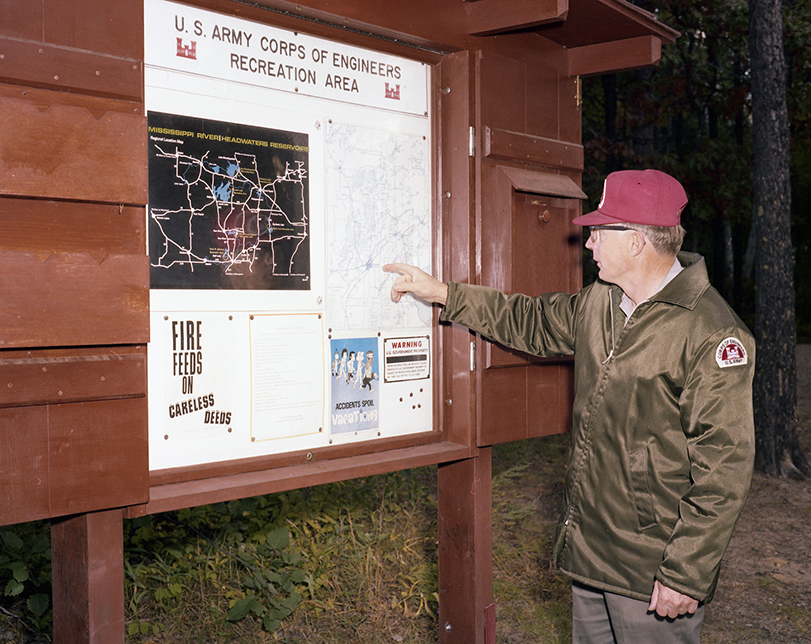 Recreation budgets throughout the 1980s continued to shrink and the hours of operation were reduced from 24/seven to 16 hours a day or less. This resulted in a further reduction of in-house ranger and co-op personnel. To offset dwindling budgets and smaller staffs, many sites developed volunteer programs and recruited volunteers to perform a wide variety of duties. Campground hosts were provided with free campsites in return for insuring the safety and security of the visiting public when Corps personnel are not present and to provide essential area and campground information. Volunteers are not permitted to enforce rules and regulations or provide law enforcement assistance.
Recreation budgets throughout the 1980s continued to shrink and the hours of operation were reduced from 24/seven to 16 hours a day or less. This resulted in a further reduction of in-house ranger and co-op personnel. To offset dwindling budgets and smaller staffs, many sites developed volunteer programs and recruited volunteers to perform a wide variety of duties. Campground hosts were provided with free campsites in return for insuring the safety and security of the visiting public when Corps personnel are not present and to provide essential area and campground information. Volunteers are not permitted to enforce rules and regulations or provide law enforcement assistance.
The recreation program entered the computer age in the late 1980s, and individual reservation systems were implemented at Eau Galle, Sandy and Cross Lakes. Those systems were discontinued in 1997, when Reserve America was awarded a contract to provide a multi-agency federal reservation system. The telephone and computerized reservation system was officially designated the National Recreation Reservation System in 2004 when it combined two separate systems. The system is still in operation today.
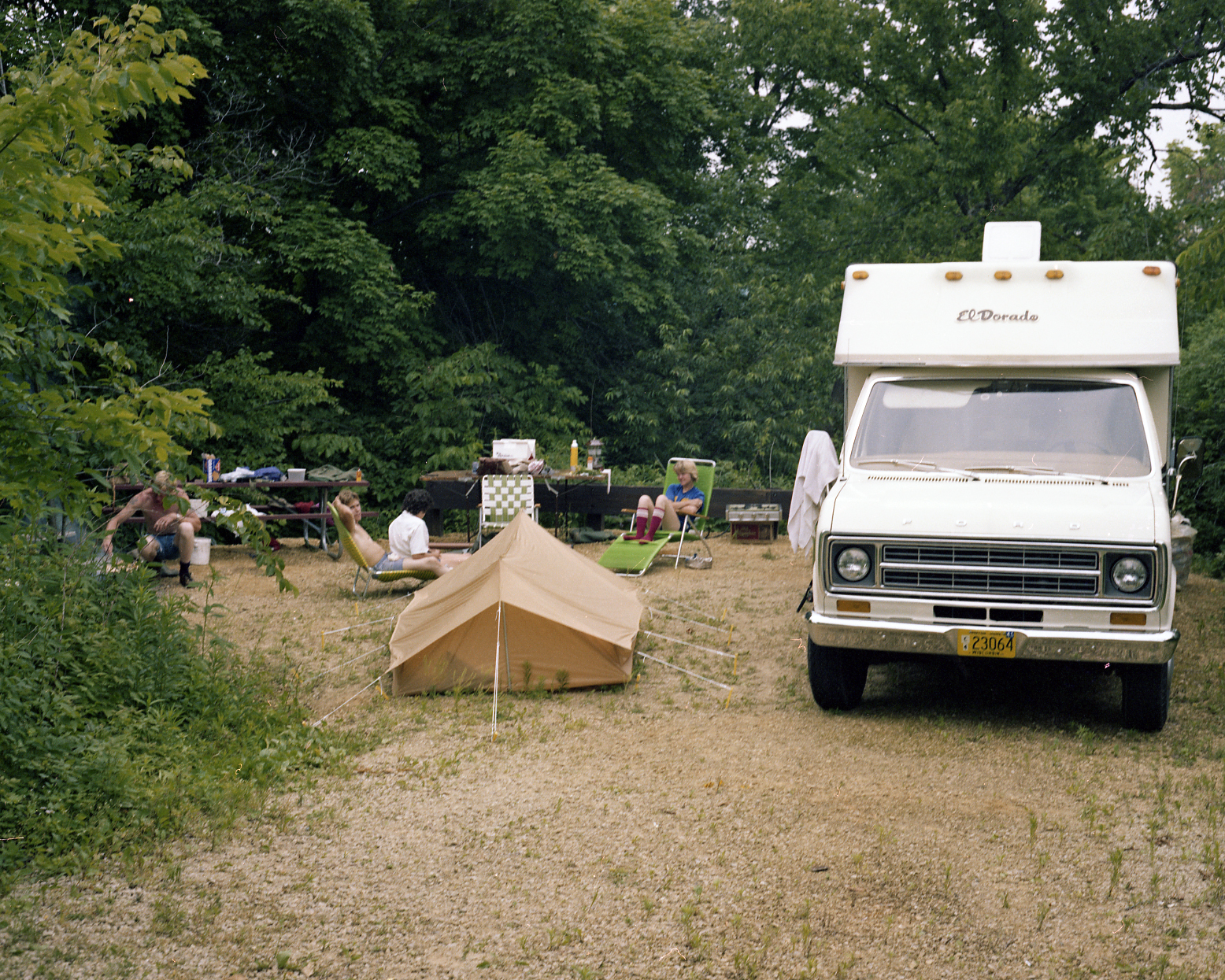 The St. Paul District currently has formal recreation programs and budgets at eleven of the district reservoirs. Class A campgrounds and day use facilities are provided at Eau Galle, Ashtabula, Blackhawk Park (Mississippi River), Leech, Sandy, Cross, Gull and Pokegama lakes. A class B campground and day use facilities are provided at Lake Winnie, and day use facilities are provided at Lac Qui Parle, Traverse and Orwell. Eau Galle also maintains a 10-site equestrian only campground along with 7 miles of riding and hiking trails. Fees are currently collected for camping, launching boats, off-road sanitary dumping, non-camper showers and rental of some picnic shelters. Day use and entrance fees are still not allowed at any St. Paul District recreation area.
The St. Paul District currently has formal recreation programs and budgets at eleven of the district reservoirs. Class A campgrounds and day use facilities are provided at Eau Galle, Ashtabula, Blackhawk Park (Mississippi River), Leech, Sandy, Cross, Gull and Pokegama lakes. A class B campground and day use facilities are provided at Lake Winnie, and day use facilities are provided at Lac Qui Parle, Traverse and Orwell. Eau Galle also maintains a 10-site equestrian only campground along with 7 miles of riding and hiking trails. Fees are currently collected for camping, launching boats, off-road sanitary dumping, non-camper showers and rental of some picnic shelters. Day use and entrance fees are still not allowed at any St. Paul District recreation area.
Wounded Warrior and handicap deer hunts have been sponsored on Corps owned land at Eau Galle and Orwell and on out grant lands on Goose Island of the Mississippi River starting in 2007. As many as 40 individuals have participated in a single year.
Most sites continue to incorporate an extensive volunteer program consisting of campground hosts and volunteers that assist in the parking areas on busy weekends, collecting fees and registering campers at Leech Lake, mowing grass, policing the grounds, performing spring cleanup of the parks, aquatic invasive species detection and a variety of other duties. Rangers provide visitors and school groups with a wide variety of interpretive programs that include natural resource management sessions, fishing derbies, wildlife education and identification and water safety activities just to name a few. The Recreation and Natural Resources Branch had a staff of 48.41 full time equivalents in Fiscal Year 2014 that included full time permanent, seasonal permanent, co-ops students and temporary personnel.